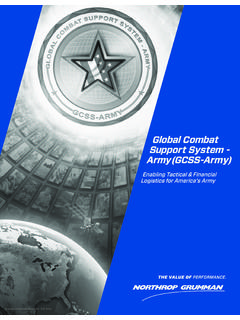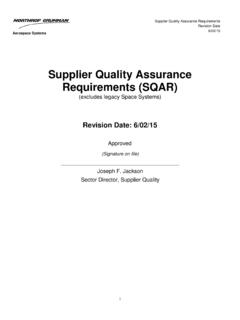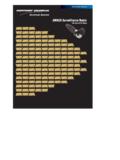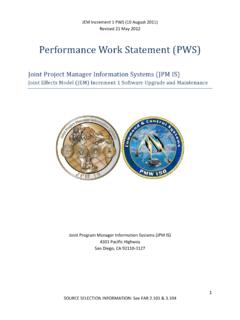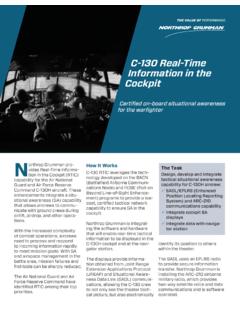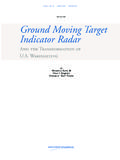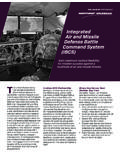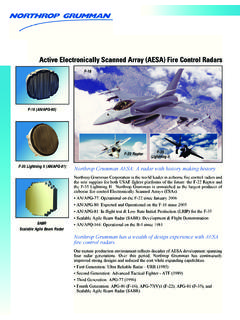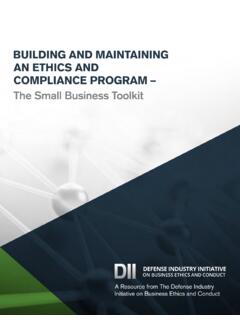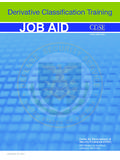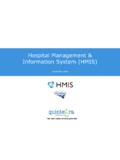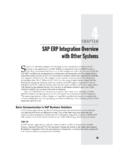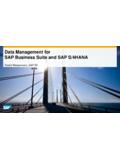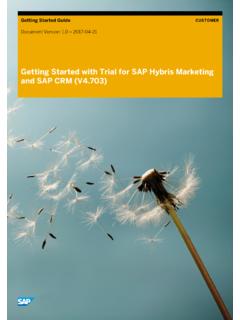Transcription of Open Catalog Interface (OCI) - Northrop Grumman …
1 open Catalog Interface (OCI) Release SAP Online Help Copyright Copyright 2003 SAP AG. All rights reserved. No part of this publication may be reproduced or transmitted in any form or for any purpose without the express permission of SAP AG. The information contained herein may be changed without prior notice. Some software products marketed by SAP AG and its distributors contain proprietary software components of other software vendors. Microsoft , WINDOWS , NT , EXCEL , Word , PowerPoint and SQL Server are registered trademarks of Microsoft Corporation. IBM , DB2 , DB2 Universal Database, OS/2 , Parallel Sysplex , MVS/ESA, AIX , S/390 , AS/400 , OS/390 , OS/400 , iSeries, pSeries, xSeries, zSeries, z/OS, AFP, Intelligent Miner, WebSphere , Netfinity , Tivoli , Informix and Informix Dynamic ServerTM are trademarks of IBM Corporation in USA and/or other countries. ORACLE is a registered trademark of ORACLE Corporation.
2 UNIX , X/ open , OSF/1 , and Motif are registered trademarks of the open Group. Citrix , the Citrix logo, ICA , Program Neighborhood , MetaFrame , WinFrame , VideoFrame , MultiWin and other Citrix product names referenced herein are trademarks of Citrix Systems, Inc. HTML, DHTML, XML, XHTML are trademarks or registered trademarks of W3C , World Wide Web Consortium, Massachusetts Institute of Technology. JAVA is a registered trademark of Sun Microsystems, Inc. JAVASCRIPT is a registered trademark of Sun Microsystems, Inc., used under license for technology invented and implemented by Netscape. MarketSet and SAP Enterprise Buyer are jointly owned trademarks of SAP AG and Commerce One. SAP, SAP Logo, R/2, R/3, mySAP, and other SAP products and services mentioned herein as well as their respective logos are trademarks or registered trademarks of SAP AG in Germany and in several other countries all over the world.
3 All other product and service names mentioned are trademarks of their respective companies. SAP open Catalog Interface 2 SAP Online Help Icons in Body Text Icon Meaning Caution Example Note Recommendation Syntax Additional icons are used in SAP Library documentation to help you identify different types of information at a glance. For more information, see Help on Help General Information Classes and Information Classes for Business Information Warehouse on the first page of the any version of SAP Library. Typographic Conventions Type Style Description Example text Words or characters quoted from the screen. These include field names, screen titles, pushbuttons labels, menu names, menu paths, and menu options. Cross-references to other documentation. Example text Emphasized words or phrases in body text, graphic titles, and table titles.
4 EXAMPLE TEXT Technical names of system objects. These include report names, program names, transaction codes, table names, and key concepts of a programming language when they are surrounded by body text, for example, SELECT and INCLUDE. Example text Output on the screen. This includes file and directory names and their paths, messages, names of variables and parameters, source text, and names of installation, upgrade and database tools. Example text Exact user entry. These are words or characters that you enter in the system exactly as they appear in the documentation. <Example text> Variable user entry. Angle brackets indicate that you replace these words and characters with appropriate entries to make entries in the system. EXAMPLE TEXT Keys on the keyboard, for example, F2 or ENTER. SAP open Catalog Interface 3 SAP Online Help 1 Contents 1 2 3 Calling Up the Catalog Using the SRM Settings in the SRM URL of the Product Return Additional Functions in the Product Detailed Display of a Product or Validation of a Sourcing/Product Background Overview of the Call-Up 4 Return From the Use of the Call-Up Parameters From Section Fields and Field Required and Optional Product Configurable Products.
5 15 External Product Customer-Specific Extensions in the XML Variant of the 5 Handling of the Browser 6 SAP open Catalog Interface 4 SAP Online Help 2 Introduction The open Catalog Interface (OCI) incorporates external product catalogs into SRM Server applications. This way, data that is required in order to create shopping cart items in the SRM Server can be transferred directly from the external Catalog to the SRM Server application. The Interface uses the transfer mechanisms of Hyper Text Transfer Protocol (HTTP). SAP AG 2003, Title of Presentation, Speaker Name / 2 OCI/OPI OverviewService ProviderInternetbrowserInternetBrowserWi th the OCI resp the OPI it is possible to integrate service providers no matter wetherthey are located in the intranet or the internet InternetSRM ServerService ProviderIntranetUser Graphic 1: System landscape The user here is working with an SRM Server application, which displays the available catalogs.
6 The user calls up one of these, selects the required products, and then transfers the product data back to the SRM Server application. This documentation describes both the architecture and the structure of the OCI and thus provides all the information that is necessary to support the OCI with a product Catalog . Also, the possible processes and their prerequisites are described. The documentation has been written both for producers of catalogs and for system administrators of SRM Server systems. Section 3 describes how the SRM Server calls the Catalog . Section 4 shows how the data is transferred from the Catalog to the SRM Server. Section 5 covers the handling of the different browser windows and Section 6 gives some reference points for troubleshooting. SAP open Catalog Interface 5 SAP Online Help 3 Calling Up the Catalog Using the SRM Server In order for a product Catalog to be called up via the Intranet or Internet, its URL must be known in the SRM Server.
7 If the product Catalog requires additional parameters for the call-up (for example, log-on names or language identifier), these must also be known in the SRM Server before the call-up. SAP AG 2003, Title of Presentation, Speaker Name / 3 OCI/OPI architecture I: call of the servicesService SRM Server application shows the available service providers (product catalogs resp. vendor directories). the user has chosen one of them, the user will be redirected to the according web site. Therefore the parameters will be used, that have been maintained in the SRM Server customizing URL and parameters2. HTTP Request with URL und parametersSRM Server Graphic 2: Call-up The URL and the Catalog parameters are defined in the Implementation Guide (IMG) for Supplier Relationship Management: SRM Server Master Data Define External Web Services (Catalogs, Vendor Lists etc.). In the technical settings (see graphic 3), you can set GET or POST as the HTTP method for the call-up, the standard value is POST.
8 The user s browser is then used to call up the Catalog using the URL and the parameters. Depending on the situation, other parameters besides those defined in the Implementation Guide (IMG) for Supplier Relationship Management can also be transferred to the Catalog on call-up. These might be, for example, to provide the Catalog with generic data or to trigger specific functions in the Catalog . A summary of the transferred parameters is shown in Section SAP open Catalog Interface 6 SAP Online Help Settings in the SRM Server The following two graphics show the maintenance screens for a product Catalog in the SRM Server. You can find the complete documentation on these in the description of the IMG activity (Define External Web Services (Catalogs, Vendor Lists etc.)). Graphic 3: The maintenance screen for general product Catalog data Graphic 4: The maintenance screen for the URL and parameters of the product Catalog SAP open Catalog Interface 7 SAP Online Help In the SRM Server, you must enter the URL and parameters of the Catalog in the following order in the IMG activity (Define External Web Services (Catalogs, Vendor Lists etc.))
9 URL of the Product Catalog You enter the URL of the Catalog in the first line of the calI structure; all subsequent entries (including the return URL in line 4) are transferred to the Catalog as parameters. You do not need to specify a parameter name for the URL itself. URL is used here as the type. If the URL is longer than the field, you can distribute the URL over several successive fields that are then all of type URL. Parameters may not be entered as part of the URL; they must be maintained separately as described in the following section. Parameters Following the URL, you must specify all parameters that the Catalog requires on call-up. The provider of the Catalog must have documented the names and valid values of these parameters. The parameter type can be either fixed value or SAP Field. This parameter type determines how the value of the parameter is determined from the column Content.
10 In the case of fixed values, the value of the parameter is entered directly in the column Content. In the case of parameters of type SAP Field (generic parameters), however, the name of a SAP System variable is there. For the value of the parameter, the content of this system variable at runtime is used. This way it is possible, for example, to transfer the system language as a parameter (you choose SAP Field as type and sy-langu as content). In this manner, you can transfer all the globally available fields at runtime from the SRM Server as parameters. Transfer of additional parameters If the fixed values and the generic parameter values are not sufficient for the chosen process, you can implement the Business Add-In (BadI) Transfer Additional Parameters (BBP_CAT_CALL_ENRICH) to transfer additional parameters from the SRM Server System to the Catalog . In this BAdI, you can determine multiple name-value pairs that are then transferred to the Catalog when it is called up.
